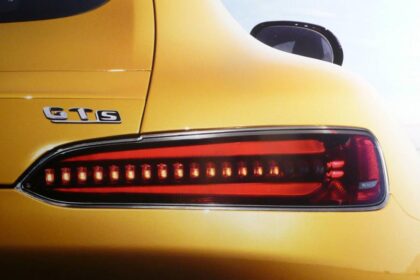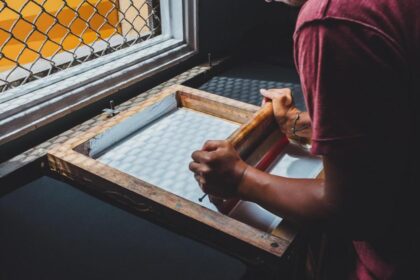How does an orthopedist in Szczecin examine a child up to 1 year old? The task of orthopedic surgeons is to quickly diagnose and treat congenital and acquired musculoskeletal disorders. In the first year of life, plastic surgeons mainly deal with the diagnosis and treatment of congenital defects. Ideally, the orthopedic surgeon should first examine newborns in the hospital when they are 3-5 days old. During this period, special attention is paid to musculoskeletal disorders or injuries that occurred during childbirth. If the child has not had such an examination in the hospital, he should go to the orthopedic clinic. Szczecin is a city with many medical facilities, you can make an appointment with a specialist.
What can an orthopedist in Szczecin recognize in a child?
Firstly, deformations of the musculoskeletal system, such as hypoplasia of the limbs or their parts, insufficiency of the hard palate, so-called cleft palate and similar deformities. During the examination, the orthopedist examines the range of joint mobility and it is at this age that he can determine the most important pathologies, the frequency of their occurrence and the severity of their consequences. Hip dysplasia, and especially congenital hip dislocation, occurs when it is not properly diagnosed and treated. At this age, when examining the range of motion of the hips, you can recognize clicks, which are small movements in the hip. In addition, clubfoot, i.e. the pathology of ankle joint development, is most often diagnosed in a hospital or specialist clinic.
- https://www.gcreations.pl/ocieplanie-dachow/
- https://www.santmat.pl/caloroczne-domy-drewniane/
- https://www.icono-kreatywni.pl/dodatkowe-koszty-kredytu-hipotecznego/
How does an orthopedic doctor in Szczecin conduct an examination of a child?
The first examination of your child by an orthopedic doctor should take place at the age of 1 month. What does an orthopedic examination include? Children should be completely undressed. The doctor starts with an examination, evaluating the correct structure of the child’s body, purity and color of the skin, shape and position of the head, proportions of body segments, symmetry and position of the limbs at rest, and the volume of active movement. This part of the control, although simple, provides a lot of important information. Disturbance of normal body structure or proportions of body parts. An off-centre position of the head can be one of the symptoms of torticollis, and the presence of subperiosteal hemorrhage in the skull can significantly change its shape.
Then the orthopedic surgeon begins the most important part of the manual examination, which shows the degree of passive movement of skeletal joints, soft tissue filling and muscle tone. Also during palpation, the doctor examines the area of \u200b\u200bthe joint and the structure of the bones. Such studies provide the doctor with the most useful information, since it is at this time that limitations in joint mobility or, conversely, hypermobility, the presence of bone or joint deformities, pain during movement, etc., are revealed.
- ceramixplytki.pl/15-plytki-kamien
- wildmoose.pl/pozycjonowanie-stron-poznan/
- rolety-24.waw.pl
- mieszkania-szczecin.eu
Based on all the information received (called the clinical picture), the orthopedic surgeon decides to prescribe additional examination methods. Currently, ultrasonic diagnostic methods are widely used. If necessary, other research methods are indicated, such as x-rays, biochemical blood tests and consultation with other specialists. After the examination, parents receive advice from an orthopedic doctor in Szczecin regarding child care, gymnastics, massage or a therapeutic program.
Orthopedic examination for children from 3 to 12 months
The 3-month follow-up duplicated earlier studies in many respects, both in terms of informative value and methodology, but there were of course some peculiarities. During the examination of a three-month-old child, the orthopedic surgeon has the opportunity to detect diseases that do not always appear in the first 1-2 months of life.
The most famous example is torticollis, which is caused by partial rupture of muscle fibers as a result of a birth injury. Symptoms of this type of torticollis usually do not appear immediately, but instead already form a noticeable scar over the damaged area. If the child’s examination performed by an orthopedist in Szczecin at the age of 3 months does not show any pathology, then the next examination should take place at the age of 6 months.
Summary of the 6-month checkup and baby development results. The main purpose of examining a healthy child at this age is to check his motor skills. First, check the child’s ability to get up from a sitting position. In the case of earlier orthopedic examinations, the possibility of initial diagnosis of congenital orthopedic diseases is small, therefore the main emphasis is placed on the dynamics of the child’s development and the effectiveness of therapeutic activities.
During the examination at this age, the orthopedic doctor may find that the child has metabolic disorders such as rickets, diabetes, etc. In addition, motor skills are revealed during the examination along with proposals to determine the conditions for the child’s development in the next six months. Examination of a one-year-old baby is largely conclusive.








